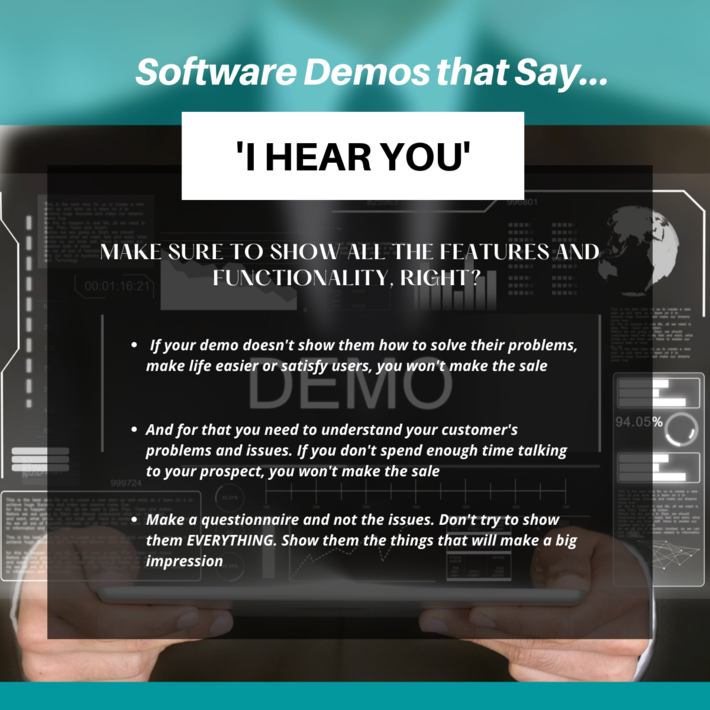
This article is really targeted to business teams and managers who are responsible for establishing the software demo process and guidelines within an organization. While my advice definitely affects those who give the demos, my experience has been that those who demonstrate software are usually following a scripted process established by someone else. That is why I am targeting the demo designers here!
When you set out to develop a software demo, you often look for consistency and uniformity, with the idea that you want to ensure that every customer gets a good sense of what the product can do. We want to show all the features and functionality, right?
But, that isn’t what a customer wants.
What is really important is that a particular prospective customer sees and hears things that resonate with them.

If your demo doesn’t show them how to solve their problems, make life easier or satisfy users, you won’t make the sale.
A good software demo is crucial to a sale.
If the customer can’t see themselves using your product, there is nothing else to talk about. So¦to close the sale, you need first to understand how your product will satisfy your customer. That means, you need to understand your customer’s problems and issues. If you don’t spend enough time talking to your prospect, you won’t make the sale. You have to understand business goals, existing processes, macro factors affecting their business, business user skills, opportunities for growth and change that will improve the bottom line¦in short, you need to KNOW your prospect.
Some software companies send out a questionnaire, some take their prospective clients out to lunch or dinner before the demo and pick their brain to find out about their current solutions, their hot buttons and other things that will help them design and plan the demo. If you develop a good set of questions, and ask those questions in person, you can tell a lot about the priorities and painful issues in the organization just by reading body language and facial expressions.
Every word and phrase you use during the demo must tell the prospective client that you were listening and that you understand their pain. You can quote the customer and then proceed to show them how a particular feature resolves their issue or makes their life easier.
Don’t try to show them EVERYTHING.
Show them the things that will make a big impression. You can leave them with brochures and other written information to outline every feature and function. Your one-on-one time should be personal, and targeted to what they need. You want them to KNOW that you heard them and that you have a solution.
You can see that a ‘canned’ demo isn’t going to get you far, can’t you? It might be uniform and it might ensure that every sales person shows every feature deemed important by the organization but it won’t sell much software. Send your new sales people out with a seasoned pro and let them see how they approach the customer, find out what matters to them and then incorporate that information into the demo. Make sure every person on your demo team understands the value of personalizing and creating a one-of-a-kind demo JUST for that client.
We all want to feel that we are understood, that the person we are talking to has heard us and cares enough to help us. That is the foundation of a good demo!
